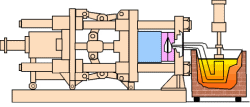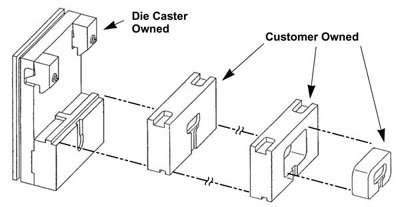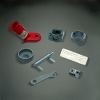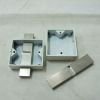Beginnings of Die Casting. Die casting was invented by Elisha K. Root in the 1830s. She was an inventor in the employ of Samuel W. Collins’ ax-making company in Canton, Connecticut.
As early mid-1800, the first examples of die casting occurred. In 1849, a patent was awarded for the first manually operated machine for casting printing type. Development of other shaped began toward the end of the century. In the early 1900s, mass production of parts of phonographs and cash registers began.
The first alloys used in die casting molds were compositions of tin and lead. Their use decreased when zinc and aluminum alloys were introduced in 1914. This was soon followed by magnesium and copper, and by the 1930s, more modern alloys were introduced.
The process of die casting developed from low-pressure injection to high-pressure castings. These modern processes, squeeze casting and semi-sailed die casting, produce high integrity castings.
Developments in the refinements of alloy as well as the process of die casting continued. Die casters now produce castings in many sizes and shapes. These castings are also durable and dimensionally precise.
Die castings is one of the mass-produced items in metalworking. Die castings are found in consumer, commercial and industrial products. They are one of the biggest volume items produced by the metalworking industry.
Dies, or die cast tooling, die cast tools and die casting molds have efficient styles, sizes and values. They come in single cavities or multiple cavities. Some die cast tools cost a few hundred dollars for trim dies. Cavity inserts cost a few thousand dollars while a complete die cast tool package costs several thousand dollars.
Blog Die Casting Zinc Company has information about Die Casting
Zinc Company and Tiny Zinc Die Castings.
Look at this webpage for
zinc die casting part prices. Click here for Castings Aluminum Prices.
Email us at Sales@DieCastingZinc.com






